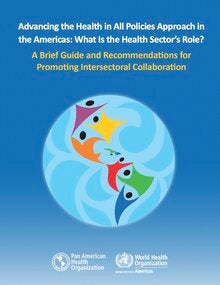The world faces critical problems that are destined to shape the future for generations. The challenges include climate change, the rise in chronic communicable diseases, urbanization, globalization, migrating populations, economic and fiscal crises, threats to natural resources, and increasing inequities.
These issues are socially complex and involve multiple factors, and they therefore require new policy paradigms, capacities, visions, and structures in order to fully address them. Moreover these challenges are interdependent and complementary in nature, which means that they cannot be placed under the responsibility of a single sector alone; innovative solutions can only be devised through inter- and cross-sectoral thinking and action. It is now widely acknowledged that the social determinants of health (SDHs) and the decisions made by other sectors can affect overall population health in both positive and negative ways.
This means that complex public health problems should be addressed through policies that coordinate efforts across sectors, make efficient use of public resources and consider the health impact of decisions that are made by non-health sectors. This recognition has given rise in recent years to a new approach to intersectoral collaboration and policy-making known as “Health in All Policies.” Health in All Policies (HiAP) is defined by the World Health Organization as “an approach to public policies across sectors that systematically takes into account the health implications of decisions, seeks synergies, and avoids harmful health impacts, in order to improve population health and health equity” (WHO, 2013).
|

